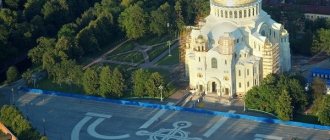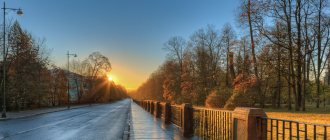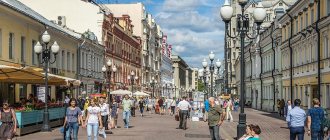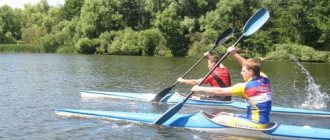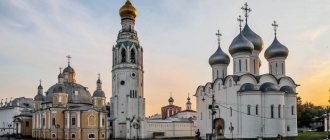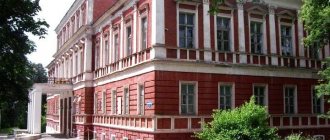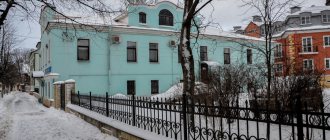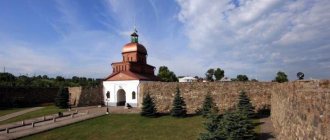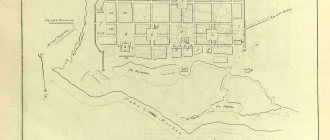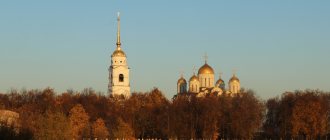Economy
Industry
- OJSC "Syasky Pulp and Paper Mill"
- Forza Marine LLC
- OJSC "Volkhovkhleb"
- JSC "New Holland"
- LLC "Agrofirm "Skif""
Other businesses
- Khimprom LLC
- OJSC "Syasky Trading House"
- Municipal Unitary Enterprise "Syastroy Communal Systems"
- LLC "Syasstroy Housing and Communal Service"
- LLC "Sever"
- MU "Syas-Park"
Trade
- Supermarkets “Pyaterochka”, “Magnit”
- Communication salons "Euroset", "Svyaznoy", "MTS"
- Company store of Velikoluksky meat processing plant
- Pharmacies "Nevis"
- Household goods store "Rainbow Smile"
- Fix Price
- Shopping complexes "Tsentr" and "Dom Byta"
Banks
- "Sberbank of Russia"
About the city Syasstroy
The Finno-Ugric past is preserved in the toponymy of the region: the name of the Syas River means “mosquito”, the Valgomka River means “pier”. A large well-known settlement on the territory of the city was Syasskie Ryadki, known from scribe books since 1572. In those days, trade flourished here, especially in fish and timber. The Syasskaya shipyard was founded on the Syas River and existed from 1702 to 1705, and the first ships of the Russian Baltic Fleet were launched, one of which was the frigate “Mikhail the Archangel”, “Ivan the City”. The next stage in the development of the Syasstroi settlement was associated with the digging of canals along the southern coast of Lake Ladoga, which have survived and function today. At this time, another trade of the population appeared - guiding ships through canals using horse traction. The new life of the region is associated with the construction in 1925-1928 of the first-born of the Soviet pulp and paper industry - the Syassky pulp and paper mill, which is still a city-forming enterprise. July 18, 1926 - laying the first stone in the foundation of the main workshop of the Syassky workshop. On November 3, 1928, the plant was put into operation. On May 16, 1927, the Presidium of the All-Russian Central Executive Committee approved a list of workers’ settlements in the Leningrad province in the Volkhov district, among them the workers’ settlement of Syasstroi. Brief characteristics of the Syasstroy urban settlement: - total land area - 12230 hectares; — population -14.7 thousand people; In the structure of the economy, the leading place is occupied by the pulp and paper industry enterprise OJSC "Syasky Pulp and Paper Mill" with a production volume of 94% of the total output and a workforce of 52% of the total number of employees in the economy (? 2300 people). About 700 people work in the small and medium-sized business sector. The flag of municipalities is established by modern heraldry and legal norms adopted in Russia as a coat of arms. The flag of the Syasstroy Urban Settlement municipality of the Volkhov municipal district of the Leningrad Region is a rectangular panel with a flag width to length ratio of -2:3, reproducing the composition of the coat of arms of the Syasstroy Urban Settlement municipality in blue, white and yellow. A silver sheet of paper is a symbol of the Syassky Pulp and Paper Mill. Fish of variable colors symbolizes the historical role of fishing in the life of the local population and the close historical connection of the local economy with Ladoga. Azure (blue, light blue) is the color of knowledge, truth, symbolizes honesty, fidelity, impeccability, the Syas River, as well as the coast of Lake Ladoga.
“Mosquito” route for tourists in Syasstroy
She compiled a special “mosquito route” especially for the readers of Obshchaya Gazeta.
“Guys, this is a whole treasure trove for excursions!” - says Evgenia Khalturina. She is a local historian, a member of the public organization of sports and tourism in the city of Syasstroy.
— In general, I have been studying Syasstroy for about 10 years. And I want to say that he is underestimated today. After all, here, you can remember, the “Road of Life” passed during the Great Patriotic War, the history of the population is at least 460 years. And the Syas River has been flowing here for at least 10 centuries.
What an amazing vacation on the water here! Festivals, holidays. I was amazed by the real village atmosphere they had. You know, like before... Because today this is often not enough.
Also here - it seems to me that you can’t tell about a single place like that - it takes two hours to tell about the left bank of the Syas River, and then about the right. And the sunrise is always different here. And the sunset too. This cannot be seen anywhere, only here.
"Sya" means "mosquitoes" in Finnish. That’s why the route that I developed is called “mosquito route.”
What is it based on? A story about villages that are nearby, but no one from the Leningrad region has ever spoken about them. The route is short. About 10 km. But even in such a small way there is so much to tell! And about how the Tikhvin and Volkhov districts, the cities of Lodeynoye Pole and Shlissenburg are connected with Peter I. We can only visit the churches, we can take a purely patriotic look at the places here, or we can even use the waterway.
To begin with, we ourselves - me and a local teacher - will try to go all the way. In my mind I already imagine our road. But, as they say, there is still room to dig.
The excursion depends on the audience, method of transportation and time of year. With young people, for example, you can walk in the summer and ski in the winter. Yes, and along the river on them. Pensioners will board the bus and get off only in special cases, at certain points. They went out, looked, and went in. It is also important whether you are local or visiting. After all, for those who have lived here all their lives, they will need to come up with something special.
"Walk in Mosquito Land"
An approximate route has been compiled for visiting adult tourists.
1. Bus stop on the square in front of the Palace of Culture. 2. Descent to the river (story about archaeological sites, the Syas and Valgoma rivers, the shipyard of 1702). 3. Return to the square - a story about the buildings of the School of Factory Apprenticeship, the Palace of Culture, and the Children's Art School. A story about people - famous countrymen: Pyotr Lavrov, Vasily Golubev, Zhores Alferov, Vasily Safonov, Maria Filippova. 4. Monument to the workers of the Syas shipyard (story about Andrei Podlesny). 5. Pionersky Bridge - Syassky Pulp and Paper Mill. 6. Sovetskaya Street - memorial - story “Syastroy - The Road of Life.” 7. On the street Cultures we return to the square (walking tour - 1 km.) 8. By bus along the street. Ring road to st. Soviet to the market (story about the construction of Syasstroy). 9. Park, beach - 15-20 minutes on foot (the bus moves to the parking lot near the Dixie store). 10. By bus to Syasskie Ryadki (Church of the Assumption of the Blessed Virgin Mary, house of the merchant Kayalin). 11. By bus to the village of Rogozha (Church of the Cathedral of the Blessed Virgin Mary, life of the villages - Podryabinye, Sudemiye, Perevoz, Otaevo, Mateevo). 12. By bus to the village of Avrovo (on the way, a story about the villages - Opoka, Pekhalevo, Pulnitsa, New Holland LLC). 13. Stop at the factory (story about the factory). The bus moves to the sports complex. 14. We return on foot to the sports complex.
Let's go have tea.
Syasstroy
Syaskie Rows
The scribe books of 1550 mention the settlement of Syasskie Ryadki, located on the right bank of the Syas River, on the site of the modern city of Syasstroy. In Rus' in the 15th–17th centuries, “rows” were called commercial and industrial settlements that did not have city fortifications. In such settlements, residents were engaged in various crafts. In the 16th century, the inhabitants of Syasskie Ryadki were engaged in trade, mainly fish and timber, as well as hunting. And tree trunks were hollowed out by boats on which they moved through the water. There were few wealthy people. Among them, the merchant Vasily Kayalin is famous; his house can still be seen in the city today.
There are two main versions of the origin of the name of the city Syasstroy. Translated from the Baltic-Finnish “syaaksi” means “osprey”, i.e. a bird of prey that feeds on fish. “Sya” from the Vepsian language (the northern branch of the Baltic-Finnish languages) means “mosquito” (“syask” - “mosquito”). This may indicate the main occupation of local residents - fishing and hunting.
Some researchers believe that during the “Time of Troubles” there were Swedish lands on the left bank of the Syas River, and Russian lands on the right bank, the border between them ran along the river. An ancient legend has been preserved, according to which the Russian residents were captured by the Swedes and taken to Sweden. Praying to return home, they saw the icon of the Dormition of the Most Holy Theotokos, which appeared to them in a silver robe and helped them get out of captivity. The image of the Mother of God showed them the way and helped them by boat to reach the mouth of the Syas River. The saved people delivered the icon to the Church of the Dormition of the Virgin Mary, where it was kept for a long time. Descendants of Swedish captives still live in Syasstroy with the surname Zarubins (who came from abroad).
On January 22, 1702, by decree of Peter I, it was ordered to “Make ships on the Syasi River.” Carpenter Wouter Wouterson was sent to build the Syas frigates at the mouth of the Syas River. On May 1, 1702, steward Ivan Tatishchev wrote to the Tsar “they have begun to build two ships at the Syaskoye mouth.” In September 1702, the first ships of the Baltic Fleet of the Russian state were launched - 2 small frigates “Fan Sas 1st” and “Fan Sas 2nd”. Both ships were 19.8 meters long, 5.7 meters wide, and the interior depth was 2.6 meters. The frigates were armed with 18 guns. The first ships did not last long; they were made in a hurry, in the absence of much experience; freshly cut timber was used for their construction. Therefore, the frigates soon dried out and lost their seaworthiness. Since 1705, they were transferred to fire ships and received new names “Vesuvius” and “Etna”.
During the construction of the following ships, the mistakes made were taken into account, and at the end of 1702 the frigates “Mikhail the Archangel” and “Ivan-Gorod” were launched, which were made to perfection. Presumably, during the construction of these ships, Emperor Peter I himself was present, and possibly worked.
In total, during the existence of the Syas shipyard from 1702 to 1705. 4 frigates, 6 shmucks, several scampaways and buers, and about 30 small ships of other modifications were built. During periods of floods, the shipyard was often flooded with water; the fast flow of the river created additional difficulties for launching ships, so in the future the Syaskaya shipyard was used only for the construction of small ships.
At the turn of the 17th–18th centuries, the village of Syasskie Ryadki was in the possession of the son of Peter I, Tsarevich Alexei Petrovich. At the beginning of the 18th century, the wooden Church of Alexy the Man of God was built here. In 1751, the Church of the Assumption of the Blessed Virgin Mary was erected next to it at the expense of Savva Yakovlev. In 1807, the wooden church burned down. From the middle of the 18th century, the village came into the possession of the largest breeder and millionaire Yakovlev Savva Yakovlevich; after his death, Syaskiye Ryadki was inherited by his descendants, who lived here until the 1870s.
In 1763–1767, with the rank of colonel of the Suzdal regiment, stationed in Novaya Ladoga, A.V. Suvorov repeatedly conducted summer exercises in Syasskie Ryadki. According to legend, a well was dug here, to which the name “Suvorov” was assigned, since the legendary commander drank water from it.
During the reign of Peter I, the construction of natural water routes with canals and locks began. In 1718, construction began on the Staro-Ladoga Canal; previously it was called the “Canal of Emperor Peter the Great.” On March 30, 1731, by decree of Empress Anna Ioannovna, the canal connecting Novaya Ladoga and Shlisselburg was opened. It became the largest hydraulic structure in Europe. In the 1920s, the Staro-Ladoga Canal was closed to shipping.
The Tikhvin water system was the shortest route from the northwest to the Volga River. In 1724, the Senate presented a report to Peter I with a request for permission to build the Syask Canal as part of the Tikhvin water system. It was planned to build a canal 28 meters wide and 2.1 meters deep. Only on May 28, 1764, the Senate’s petition was approved, and in 1765, construction of the canal began. But soon the work was stopped due to lack of funding. Construction was carried out with long interruptions and was completed only after 36 years, and on June 1, 1802, the canal was opened to ship traffic. In 1878–1888, the Novosyassky Canal was built, which was formerly called the “Empress Maria Fedorovna Canal.”
In the “List of Populated Places of the St. Petersburg Province” for 1864 (according to information from 1862), Syasskie Ryadki is listed as a proprietary village within the Novoladozhsky district, 11 versts from the district town of Novaya Ladoga. The village had 163 households and 970 residents of both sexes - 442 males and 528 females. In the village there are: 1 Orthodox church, 3 chapels, a schismatic chapel, a rural school, a postal and philistine station, 2 fairs, government transportation across the Syasya River.
Syasstroy in the 20th century
In 1925, construction began on one of the firstborns of the domestic pulp and paper industry - the Syassky pulp and paper mill. Previously, in this place, at the confluence of the Syasi and Valgomka rivers, there was a small village of Nosok consisting of eight houses. On June 26, 1925, the Council of People's Commissars of the USSR approved the plan for the construction of a settlement of the plant named after Comrade Stalin - the future city of Syasstroy. The enterprise became a city-forming enterprise; in two years, more than 60 two-story houses were built in the village.
The laying of the first stone in the foundation of the plant took place on July 18, 1926; in honor of this event, one of the streets of the city of Syasstroy was subsequently named “July 18”. In 1928, the 1st stage of the Syassky plant was put into operation - a wood preparation shop, an acid-cooking shop, a drying and paper shop and TPP-1. On November 3, 1928, the first products rolled off the plant’s assembly line—the first tons of sulfite pulp. For its production, the enterprise installed six digesters and two German press-pats with a capacity of 100 tons per day. At the same time, construction of the 2nd stage of the plant was underway.
On May 16, 1927, by decree of the Presidium of the All-Russian Central Executive Committee, the village of Syasskie Ryadki was classified as a workers' settlement in the Volkhov district of the Leningrad province and given the name Syasstroy.
During the Great Patriotic War, part of the Syassky pulp and paper mill was evacuated to the rear. On March 9, 1942, the State Defense Committee decided to build the Syaskaya shipyard at the mouth of the Valgomka River. On May 20, 1942, the first barge was launched from here, intended to send cargo to besieged Leningrad. Until the end of the war, the Syasskaya shipyard launched about 100 ships.
In 1992, the workers' village of Syasstroy was given the status of a city of regional subordination. The village of Syasskie Ryadki is currently included within the city limits of Syasstroy.
The city of Syasstroy is the administrative center of the Syasstroy urban settlement. Located in the Volkhov district of the Leningrad region, on the river. Syasya , 7 km west of the railway. Lungachi station, 140 km east of St. Petersburg.
The population of the city in 2010 was 13,747 people.
The first written mention of the village of Syasskie Ryadki dates back to 1582.
In 1702, by decree of Peter I, on the Syasi near the village. Soon two warships were launched here: “Mikhail Archangel” and “Ivangorod”. The shipyard was fully supplied by local carpenters and blacksmiths. A few years later, a shipyard was established in Lodeynoye Pole, and the creation of military ships continued there. In Syasskie Ryadki they began to assemble only small coastal vessels (adapted for coastal navigation and not going out to the open sea).
The village flourished, developed, and in 1751 the Church of the Assumption of the Blessed Virgin Mary . Among the shrines of the temple there was a particularly revered icon of the Dormition of the Blessed Virgin Mary. Associated with it is a legend about several Russian prisoners who miraculously escaped from the Swedes and, by an unknown force, were transported on boats to Syaski Ryadki. After the construction of the church, the village received a second name - Uspensky Syassky Pogost.
During the reign of Emperor Alexander I, the construction of the Tikhvin water system began - the shortest shipping route connecting St. Petersburg with the center of the country. Several canals were dug, among them Syassky and Svirsky. In 1811 the system was opened for navigation. There were 105 piers along the entire waterway, and one of the largest was the pier in Syasskie Ryadki. This had a beneficial effect on the development of surrounding areas. Residents of Syasskie Ryadki began to engage in shipping and navigation.
In 1851, the first train passed between St. Petersburg and Moscow. With the development of the railway network, the importance of the Tikhvin water system began to decline, although for a long time it was used for local transportation. By the beginning of the 20th century. The once large village turned into a small fishing village.
In 1926, construction of a pulp and paper mill began on the Syasi River. Not far from Syasskie Ryadki, a working settlement for builders was built, called Syasstroy . A year later it received the status of an urban village. Already in 1928, the new plant was operating at full capacity. During the Great Patriotic War, the plant’s equipment was evacuated to the Kirov region, and the workshops housed a base for the repair of military equipment - aircraft, tanks, and combat boats. On the river bank in Syasstroy, they urgently began to build heavy-duty barges for the legendary Road of Life - about a hundred of them were built in total. Food, ammunition and medicine were delivered to besieged Leningrad on barges, and children, the sick and wounded were taken out of it.
Since 1992, Syasstroy received city status. In 2007, its coat of arms was approved.
Today, as before, the city-forming enterprise of Syasstroy is the Syassky pulp and paper mill, with the foundation of which the emergence of the city was associated.
The M18 Kola highway passes through the city.
Among the main attractions of the city are:
The Church of the Assumption of the Blessed Virgin Mary in Syasskie Ryadki was built in 1751 (Lenin St., 77a, Tel.: 8 (813 63) 5 56 71). Previously, according to popular legend, in this area there was a wooden temple in honor of St. Alexia the Man of God. Unfortunately, this temple burned down; the antimension and utensils were saved and transferred to the Assumption Church.
In Syasskie Ryadki (historical district of Syasstroy) there is a well called Suvorovsky .
Telephone code: +7 81363
Official website of the State Enterprise Administration: www.syasadm.ru
